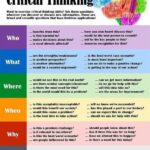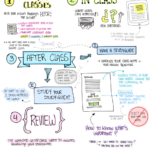Ways to Develop Critical Thinking and Metacognition Skills Critical thinking involves an awareness of mode of thinking within a domain (e.g., question assumptions about gender, determine the appropriateness of a statistical method), while metacognition involves an awareness of the efficacy of particular strategies for completing that task. Metacognition is, put simply, … [Read more...] about Ways to Develop Critical Thinking and Metacognition Skills
Classroom
The Critical Thinking Skills Cheat Sheet
The Critical Thinking Skills Cheatsheet Critical thinking is the intellectually disciplined process of actively and skillfully conceptualizing, applying, analyzing, synthesizing, and/or evaluating information gathered from, or generated by, observation, experience, reflection, reasoning, or communication, as a guide to belief and action. Someone with critical thinking … [Read more...] about The Critical Thinking Skills Cheat Sheet
25 Question Stems Framed Around the Early, Non-revised Bloom’s Taxonomy
25 Question Stems Framed Around the Early, Non-revised Bloom’s Taxonomy The Critical Thinking Skills Cheatsheet Bloom's taxonomy is a set of three hierarchical models used to classify educational learning objectives into levels of complexity and specificity. The models organize learning objectives into three different domains: Cognitive, Affective, and … [Read more...] about 25 Question Stems Framed Around the Early, Non-revised Bloom’s Taxonomy
Exam Preparation: 12 Study Tips
Exam Preparation: 12 Study Tips This handout offers several tips on effective studying. Implementing these tips into your regular study routine will help you to efficiently and effectively learn course. https://waterfordbanquet.com/ … [Read more...] about Exam Preparation: 12 Study Tips



